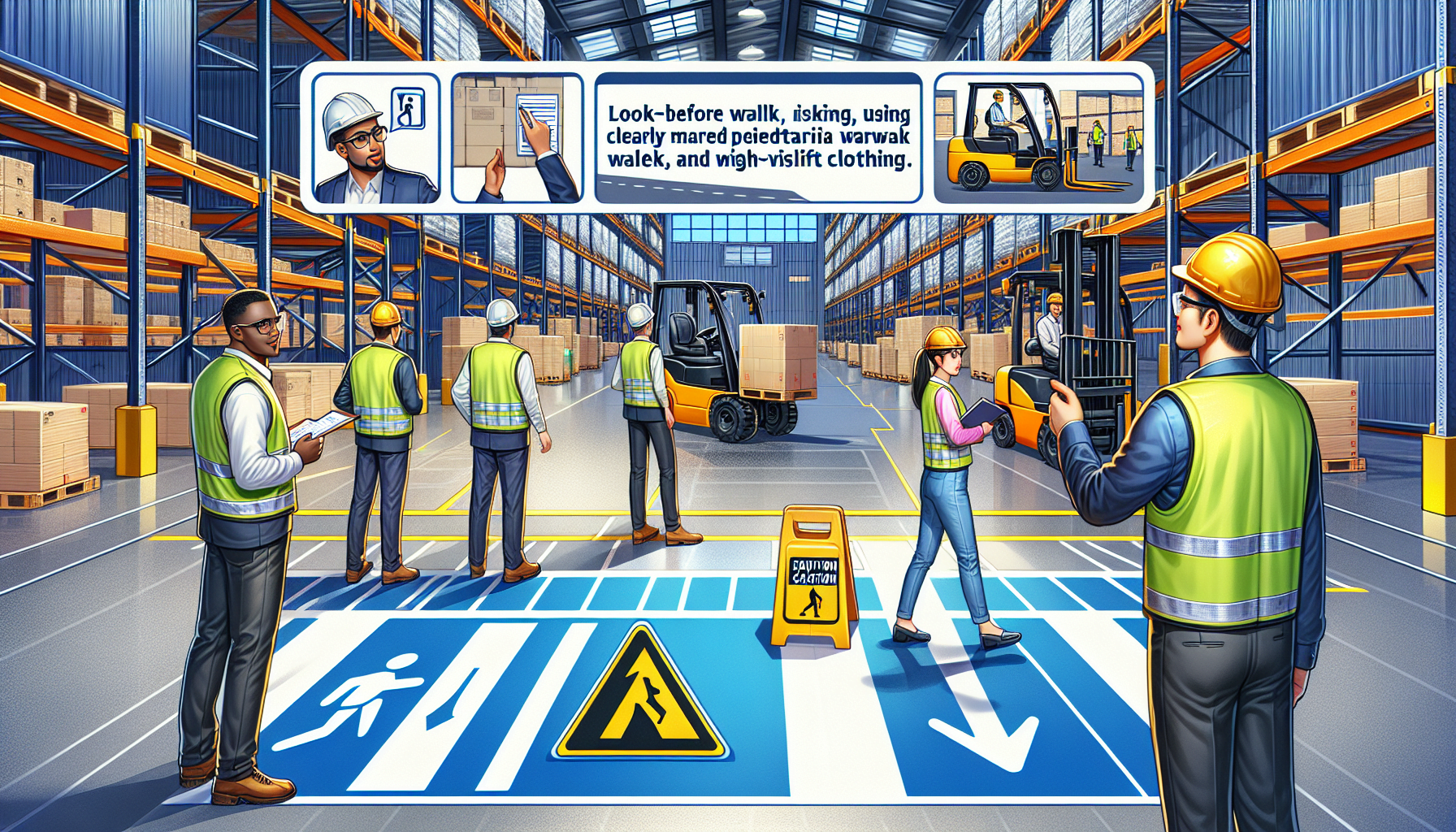Warehouses are bustling hubs of activity, with forklifts, pallet jacks, and other heavy machinery operating throughout the day. With all this movement, it’s crucial to prioritize pedestrian safety in the warehouse environment. Implementing a comprehensive pedestrian safety training program is an essential step to ensure the well-being of both workers and visitors.
The Importance of Pedestrian Safety in Warehouses
Warehouses can be hazardous environments, especially when pedestrians and forklifts share the same space. According to the Occupational Safety and Health Administration (OSHA), forklift-related accidents account for a significant number of workplace injuries. Many of these accidents involve pedestrians who are struck by or pinned against objects by forklifts.
The consequences of these accidents can be severe, leading to serious injuries or even fatalities. Not only does prioritizing pedestrian safety enhance the well-being of workers, but it also helps to reduce legal liability, workers’ compensation claims, and lost productivity due to injuries.
Developing a Pedestrian Safety Training Program
Implementing a pedestrian safety training program in warehouses requires a systematic and comprehensive approach. Here are the key steps to developing an effective training program:
- Evaluate the Warehouse Layout: Begin by assessing the layout of your warehouse. Identify high-risk areas where pedestrians and forklifts interact frequently, such as loading docks, narrow aisles, and crosswalks. This evaluation will help you determine the areas that require heightened safety measures and focus during the training program.
- Create Clear Traffic Control Policies: Establish clear traffic control policies to ensure that all employees and visitors understand the rules and regulations regarding pedestrian safety. Clearly mark designated pedestrian walkways and forklift-only zones, and ensure that all signage is visible and easy to understand.
- Train Employees on Safe Work Practices: Provide comprehensive training to all employees, including both pedestrians and forklift operators. This training should cover the proper use of personal protective equipment (PPE), safe walking and working practices, and forklift operational safety.
- Emphasize Communication and Awareness: Encourage effective communication between pedestrians and forklift operators to avoid accidents. Teach employees to make eye contact with forklift operators and use hand signals when necessary. Additionally, promote a culture of awareness and accountability, where employees actively watch out for each other’s safety.
- Regularly Conduct Safety Audits: Implement regular safety audits to ensure that the pedestrian safety measures are being followed consistently. These audits can help identify any gaps in the training program and provide an opportunity for continuous improvement.
- Invest in Technology Solutions: In addition to training programs and policies, consider investing in advanced technology solutions to enhance pedestrian safety in the warehouse. For example, HCO Innovations offers a Forklift Pedestrian Detection System that uses innovative technology to alert forklift operators when pedestrians are in close proximity, helping to prevent accidents. Click here to learn more about this system.
Benefits of Implementing a Pedestrian Safety Training Program
Implementing a pedestrian safety training program in warehouses offers several benefits:
- Reduced Accident Risk: By educating employees on safe work practices and raising awareness about pedestrian safety, the risk of accidents and injuries can be significantly reduced.
- Improved Productivity: When employees feel safe and confident in their working environment, their productivity levels increase. A pedestrian safety training program helps create a culture of safety and boosts overall warehouse productivity.
- Legal Compliance: Following OSHA guidelines and implementing a comprehensive training program ensures that your warehouse remains in compliance with safety regulations. This can help you avoid penalties and legal issues.
- Cost Savings: By preventing accidents and injuries, you can reduce workers’ compensation claims and insurance costs associated with workplace incidents.
Ultimately, a pedestrian safety training program is an investment in the well-being of your employees and the success of your warehouse operations. By prioritizing pedestrian safety through comprehensive training, clear policies, and advanced technology solutions, you can create a safe and efficient environment for everyone.
Remember, safety is a collective responsibility. By working together and implementing the necessary measures, we can ensure that every individual in the warehouse goes home safely at the end of the day.

